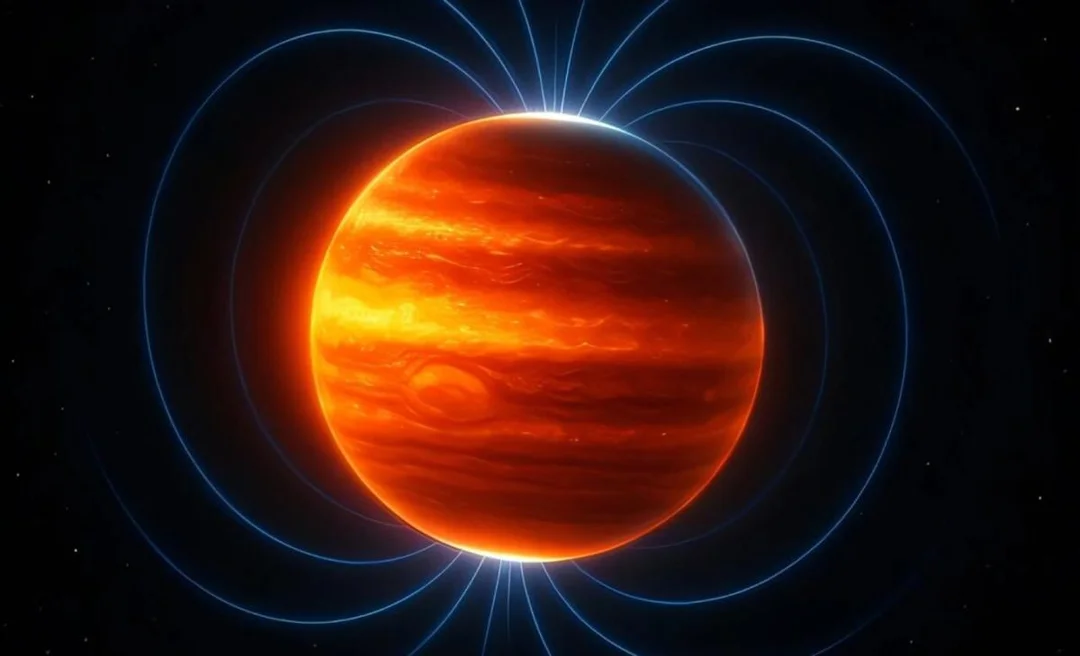
Jupiter’s Secrets Revealed: How the Giant Shaped Our Solar System in Its Youth
Jupiter, the solar system's behemoth, played a pivotal role in shaping the planetary neighborhood long before Earth even had continents. New research, utilizing the orbits of its small, inner moons, provides a fresh perspective on the gas giant's early life, including its size, magnetic field, and influence on the overall architecture of our solar system.
The study, conducted by Konstantin Batygin of Caltech and Fred C. Adams of the University of Michigan, highlights Jupiter's role as the 'architect' of the solar system. Its immense gravity sculpted the protoplanetary disk, influencing the orbits of other planets and the distribution of asteroids and comets. Understanding Jupiter's early state is crucial to unraveling the solar system's history.
Instead of relying on complex simulations laden with uncertainties, Batygin and Adams focused on a specific moment in time: 3.8 million years after the formation of the first solid grains in the protoplanetary disk. By this point, the Sun's surrounding gas was dissipating, and Jupiter had largely completed its growth. The key to unlocking Jupiter’s past lay in the orbits of two small moons: Amalthea and Thebe.
Amalthea and Thebe, orbiting closer to Jupiter than even Io, exhibit slight orbital inclinations. These subtle wobbles, analyzed using celestial mechanics, revealed that early Jupiter possessed a radius approximately twice its current size – a volume equivalent to over 2,000 Earths. This suggests a 'puffy' juvenile gas giant, similar to those observed around other young stars. Furthermore, calculations point to a magnetic field roughly 50 times stronger than what NASA's Juno spacecraft measures today, implying a turbulent, metallic-hydrogen interior and an incredibly rapid spin.
"It's astonishing that even after 4.5 billion years, enough clues remain to let us reconstruct Jupiter's physical state at the dawn of its existence," said Adams. This finding is essential because it provides a firm boundary condition for simulations aimed at understanding the early phases of planet formation. According to Batygin, "Our ultimate goal is to understand where we come from, and pinning down the early phases of planet formation is essential to solving the puzzle. This brings us closer to understanding how not only Jupiter but the entire solar system took shape."

Jupiter's influence extends beyond its immediate vicinity. Its early inflated state may have altered the paths of Saturn, Uranus, and Neptune, and even flung icy bodies into the distant Oort Cloud. While the initial formation of Jupiter's core remains somewhat ambiguous, this study provides a valuable benchmark for reconstructing the evolution of our solar system.
By deciphering the faint gravitational whispers preserved in the orbits of Amalthea and Thebe, astronomers are gaining unprecedented insight into the dawn of our solar system. They picture a young Jupiter, twice its current size, enveloped in a magnetic field 50 times stronger, guiding the chaos of the protoplanetary disk towards the ordered planetary system we know today.
This research, published in the journal Nature Astronomy, offers a compelling glimpse into the past, showcasing Jupiter's profound impact on the solar system's formation. What are your thoughts on how early planetary conditions influenced the arrangement of our solar system? Share your perspective and let us know what aspects of this research resonate most with you!